Variety introduction, baking analysis and brewing suggestion of Komatina cranberry coffee producing area in Kenya AB
Professional coffee knowledge exchange more coffee bean information please follow the coffee workshop (Wechat official account cafe_style)
KenyaAB Kiambu Gitwe
Kenya AB Komatina Cranberry
Producing area: Qianbu
Micro-area: Gitwe
Soil: volcanic clay
Altitude: 1400 m-1800 m
Varieties: Lmuri 28, SL-34, Ruiru 11
Treatment: Kenyan 72-hour washing
| 01 | production area profile |
Kenyan producing area
Kenya (Kenya) is located in eastern Africa, adjacent to Ethiopia, the "source of coffee". Despite the fertile soil, coffee was first grown in the country when Bourbon (also known as French mission, to commemorate the introduction of French missionaries) was introduced from Brazil in 1893; like the story of "go left, go right", coffee did not move inland to the south but to the Red Sea. After hundreds of years of spread, after settling down and mutating all over the world, he returned to his hometown, the Great Rift Valley (The Great Rift Valley).
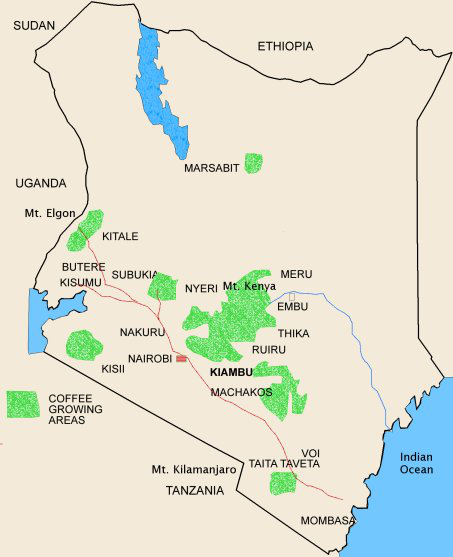
"Kenya" is one of the major coffee producing countries. More than 6 million people in the country are engaged in the coffee industry, mostly in the form of a combination of small farmers, wet treatment plants and cooperatives. Kenyan coffee is mainly treated by washing. Coffee trees are mostly planted in mountainous areas with an altitude of 1400 meters to 2000 meters above sea level. There are Ruiri, Thika, Kirinyaga and Mt in the producing areas. Kenya West, Nyeri, Kiambu and Muranga. Most of the famous producing areas in Kenya are concentrated in the central part, such as Nyeri, Kiambu, Kirinyaga and the western mountains near Uganda (Nakuru, Bungoma, Kitale, etc.)
Kiambu production area introduction:
Altitude: 1500-2200m
Harvest: first harvest: October-December, second harvest: June-August
Variety: SL-28, SL-34, Batian
Coffee cultivation in Kenya
Coffee farms are mostly small-scale operations with an annual output of hundreds of kilograms. They will decide to sell the fruit to the nearby processing plant (Coffee Factory) according to the delivery distance and the purchase price. Farmers own a small area of land, which is usually measured by the total number of trees on a piece of land, which means that producers often have more autonomy to strategically pick fresh coffee fruit. and can deliver the most mature fresh coffee fruit to the local factory (washing plant). Factories generally have abundant water resources for fine washing, including soaking coffee beans in fresh water for a long time to consolidate the unique Kenyan flavor.
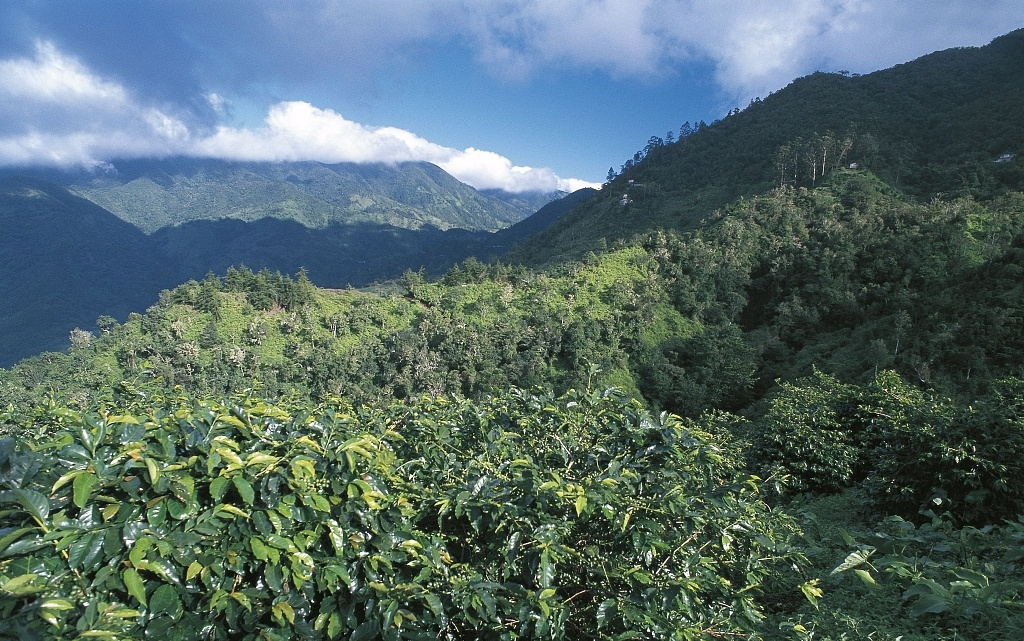
The main varieties in Kenya are SL28 and SL34. It was cultivated and named by the "Scott Laboratories" laboratory in 1930. According to botanists in SL laboratory, SL28 and SL34 are genetic variants. Among them, SL28 has a mixed pedigree of French missionaries, mocha and Yemeni Tibica. The goal of cultivating SL28 was to mass produce coffee beans with high quality and resistance to diseases and insect pests. Although SL28 did not produce as much as expected, copper and broad bean-shaped beans have great sweetness, balance and complex flavor, as well as significant citrus and black plum characteristics. SL34 is similar to SL28 in flavor, with a heavier, fuller and cleaner finish than SL28, except for the complex acidity and great sweetness of the finish. SL34 has French missionaries, bourbon, and more Tibica ancestry. Dou looks similar to SL28, but is more adaptable to sudden heavy rain. It is these two important varieties that lead us to know the unique Kenyan coffee beans. At present, the popular varieties in Kenya include Ruiri 11 with high disease resistance but slightly lower taste, and Batian, K7 and Kent with high drought resistance.
02 | processing method
Kenyan 72-hour washing method
Kenyan coffee is famous for its rich layers and clean taste. Its unique Kenyan-style water washing method goes through two water-washing and fermentation procedures, commonly known as "double fermentation". It is a rather complicated but delicate method of raw bean treatment. This treatment is more time-consuming and water-consuming than ordinary water washing, so Kenyan coffee is more expensive, but it is also an indispensable method to create a unique sour flavor and clean taste of Kenyan coffee.
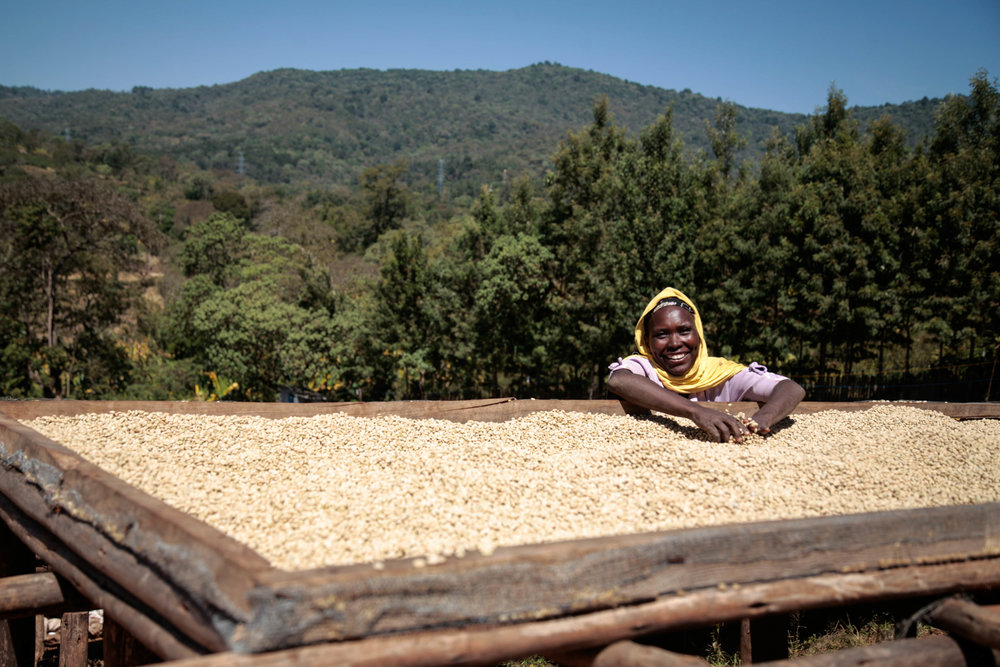
First washing and fermentation
After the coffee cherry harvest, the beans will first be picked by the specific gravity of the water flow; the principle is that the coffee fruit itself is screened by the difference in density and quality; the coffee beans with high density (heavy weight) will sink into the water, while the coffee beans with low density will float. The coffee fruits with high mature quality have high density, so they are screened out for further treatment.
After the high-quality and ripe fruits are selected, the peel is removed, washed and soaked, and the pectin mucus attached to the outer layer of raw beans is fermented. Pectin has natural sugars and alcohols, which play an important role in the development of sweetness, acidity and overall flavor of coffee.
The fermentation time is as long as 24 hours, and after fermentation, 80% of the pectin is removed, leaving only the flavor in the coffee beans.
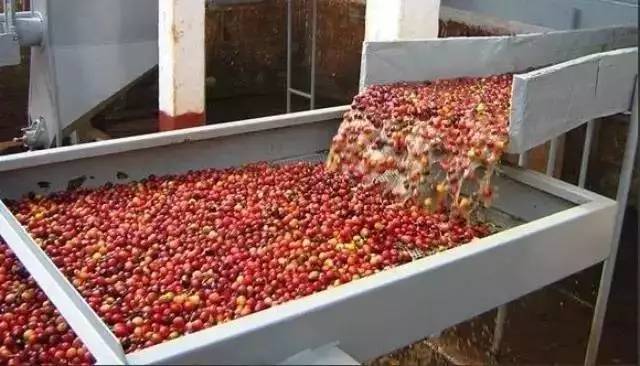
The second washing and fermentation
Then enter the second washing fermentation process. After the coffee beans in the previous stage are cleaned, they are soaked in water again for 24 hours. This process increases proteins and amino acids, and the acidity of coffee beans creates complex and delicate layers of taste.
Finally, remove all the remaining pectin and move the coffee beans to a high scaffolding for sun drying, depending on the weather, which usually takes about 10 days.
03 | Analysis of raw beans
The varieties of [Kenyan AB Komatina cranberry] are SL-28, SL-34 and Ruiru 11. It has a great sense of sweetness, balance and complex flavor, as well as remarkable citrus and black plum characteristics.
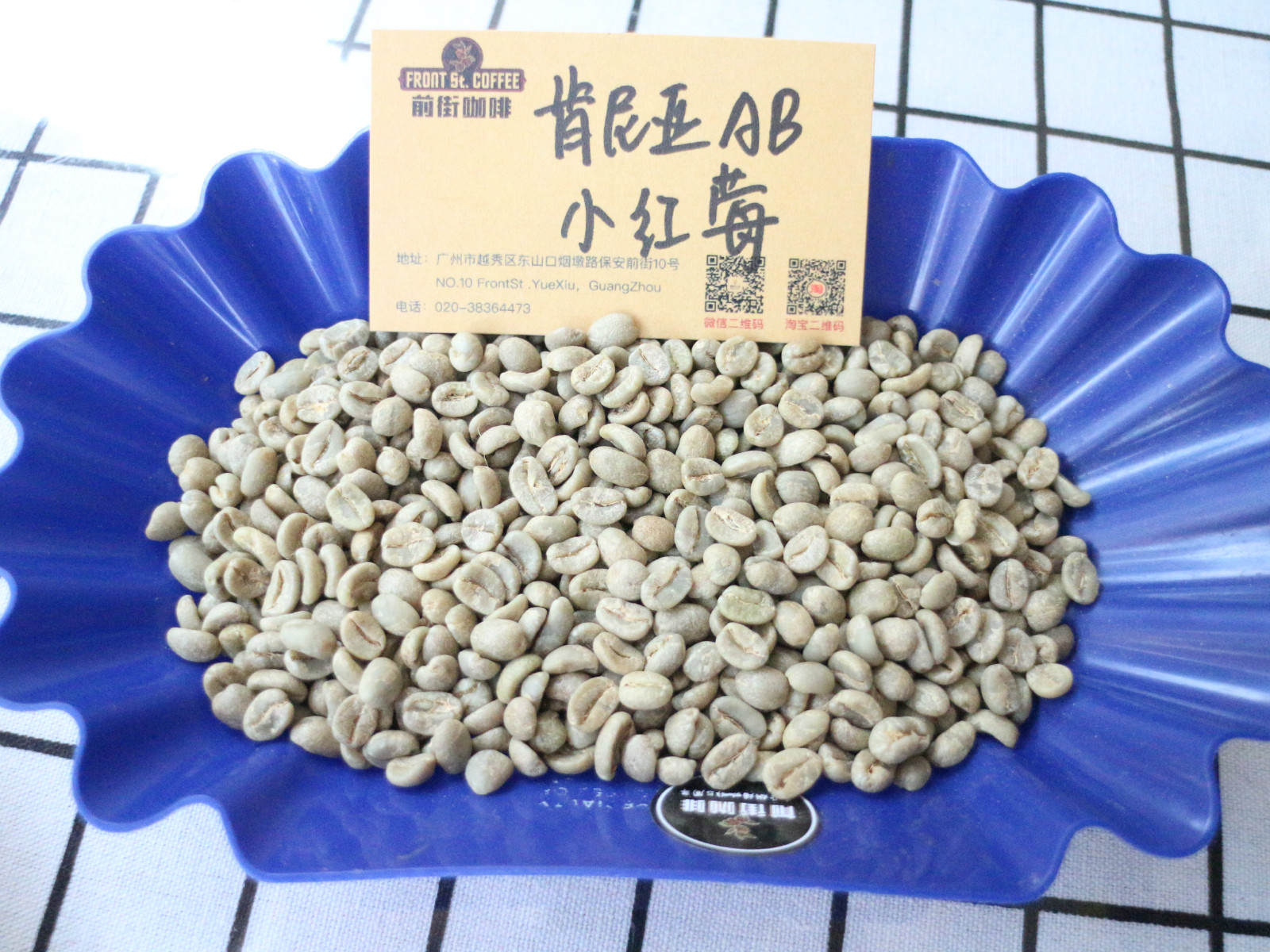
[difference between Kenyan AB and Kenyan AA]
The quality of Kenyan coffee is strictly controlled, and it is divided into AA,AB,C,E,PB,TT,T,ML,MH according to size, particle and shape. These grades mainly distinguish the shape and size of beans, but not absolutely represent the quality of beans. Many people believe that beans with larger grains contain more oil that produces the aroma of coffee, and because of this, beans with larger grains are more expensive in the market. The size of AA is 17 and 18 mesh, and that of AB is 15 and 16 mesh.
In the same grade of beans, the highest grade is manor beans, followed by "+", and then the general AA,AB grade compared with AA,C grade is smaller beans, E grade is extra-large elephant beans, TT, T, ML, MH are local non-flowing beans.
As for the distinction of quality, Kenya uses the digital grading method to distinguish the quality of coffee, but this digital grading method is not much publicized, so few people know about it. Therefore, the classification is based on particles, and the PB with different shapes is about the same as AA, but if it is manor or +, it is two or one grade respectively. For example, AB manor beans are about the same as AA+ and PB+. The flavor grade of TOP, PLUS, FAQ,FAQ-- "Fair to Average Quality" will have some slight defective beans, but it will not affect the flavor.
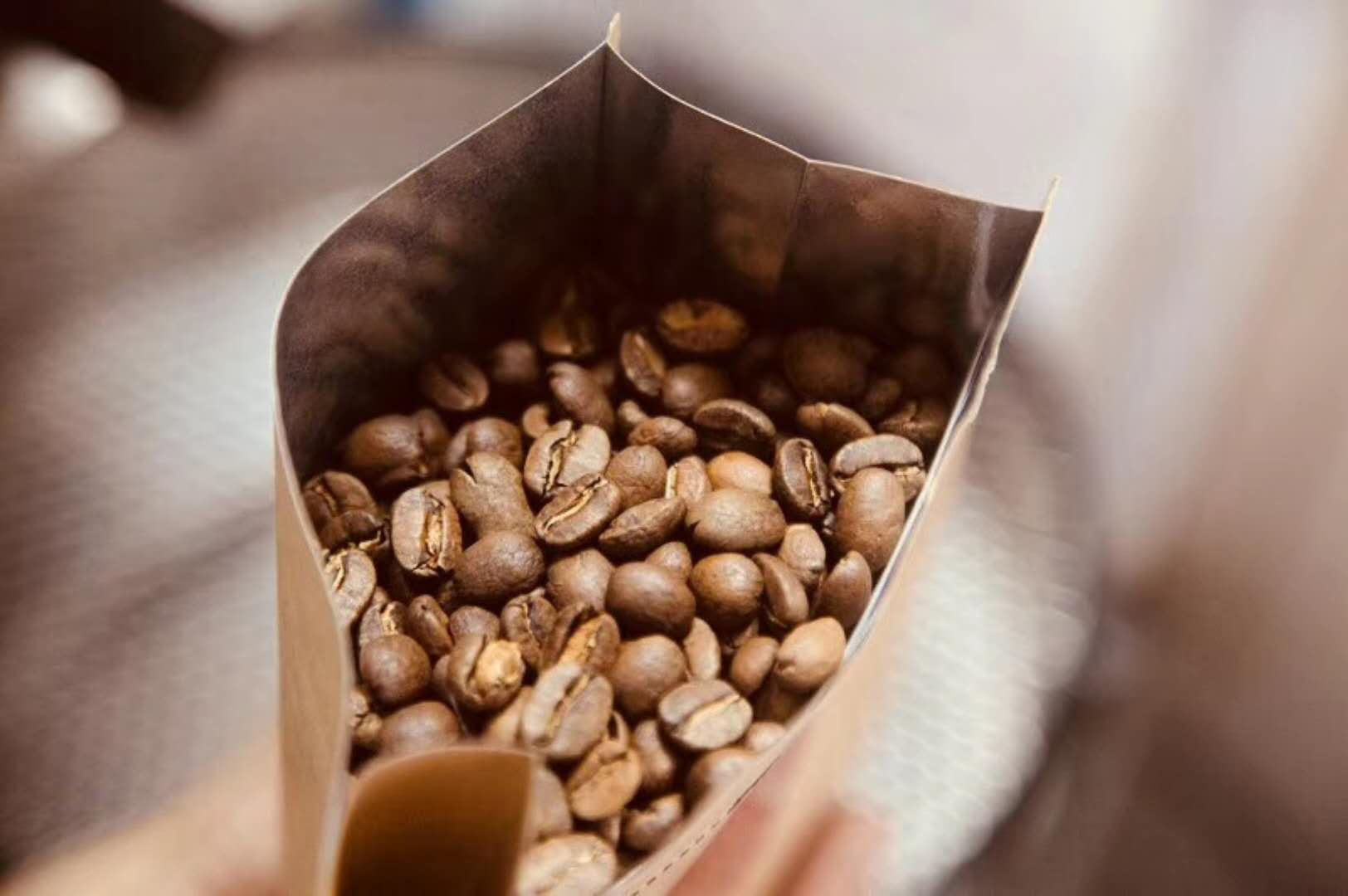
04 | Baking analysis
This coffee has relatively small particles, medium density and low water content. The goal of baking is light medium baking, which is different from other shallow baking in Kenya. This cranberry uses light medium baking to reduce the intensity of sour taste, improves texture and balance, and makes the overall performance more sweet and juicy.
In the first batch of baking, the lower bean temperature is relatively high, the bean temperature is 200 degrees, and the firepower is also relatively high. In the baking process, it was found that the elevation of the bean was relatively low and the bean quality was slightly soft, so the baking technique of gradually lowering the fire and climbing steadily was adopted, and the firepower was adjusted separately when the bean entered the yellowing point, the dehydration was finished, and the precursor of an explosion was finished, so as to avoid the burns of the bean surface, prolong the explosion time slightly, increase the caramelization reaction time, and improve the texture and balance of flavor.
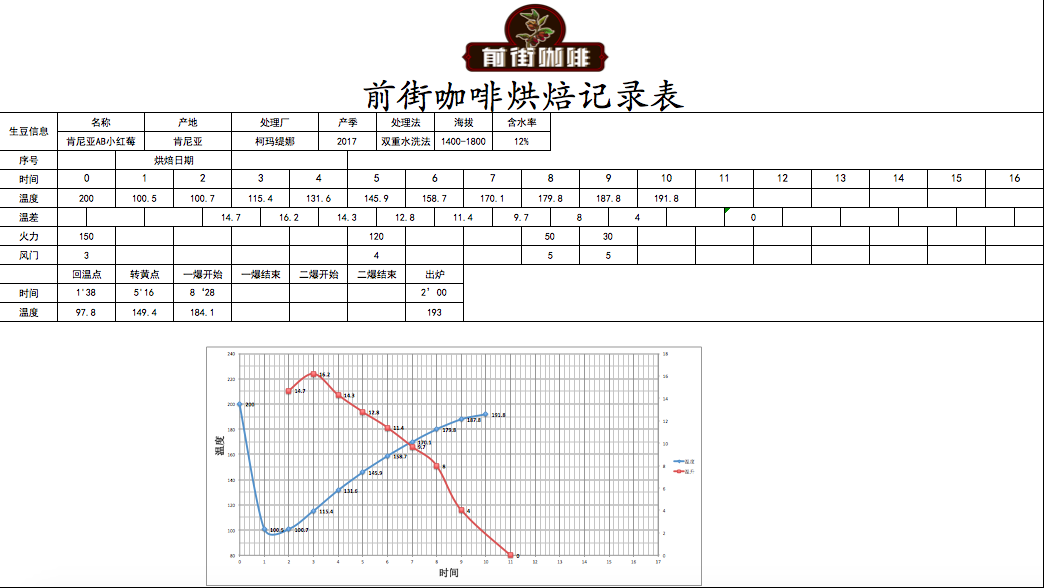
Roaster Yangjia 600g semi-direct fire
Enter the pot at 200 degrees Celsius, adjust the firepower to 150 degrees after opening the throttle for 3, 30 seconds, keep the throttle unchanged, the temperature recovery point is 1: 38 ", keep the firepower, when 5: 16", the bean surface turns yellow, the smell of grass disappears completely, enter the dehydration stage, the firepower is reduced to 120 degrees, and the throttle is adjusted to 4.
After dehydration at 7 '05pm, the firepower dropped to 80 degrees and black markings appeared on the bean surface, and the smell of toast obviously changed to coffee, which can be defined as a prelude to an explosion. At this time, listen carefully to the sound of the explosion point. Start the explosion at 8: 28 ", turn the firepower down to 50 degrees, and the throttle is fully open 5 (the firepower should be very careful, not so small that there is no bursting sound). After an explosion, the development is 2: 00 ", and the pot is 193 degrees.
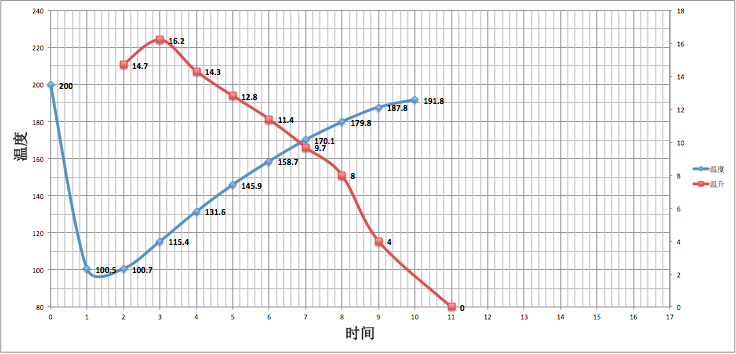
This Kenyan coffee bean has a well-balanced texture, with obvious sweet and sour taste and soft flavor, with rich citrus, grapefruit and berry flavor.
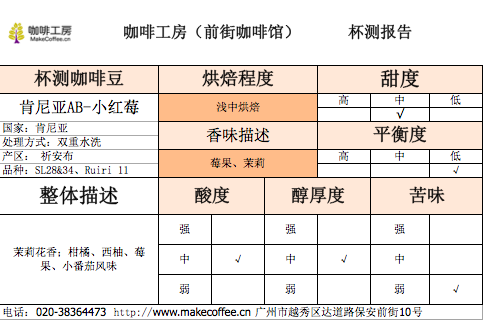
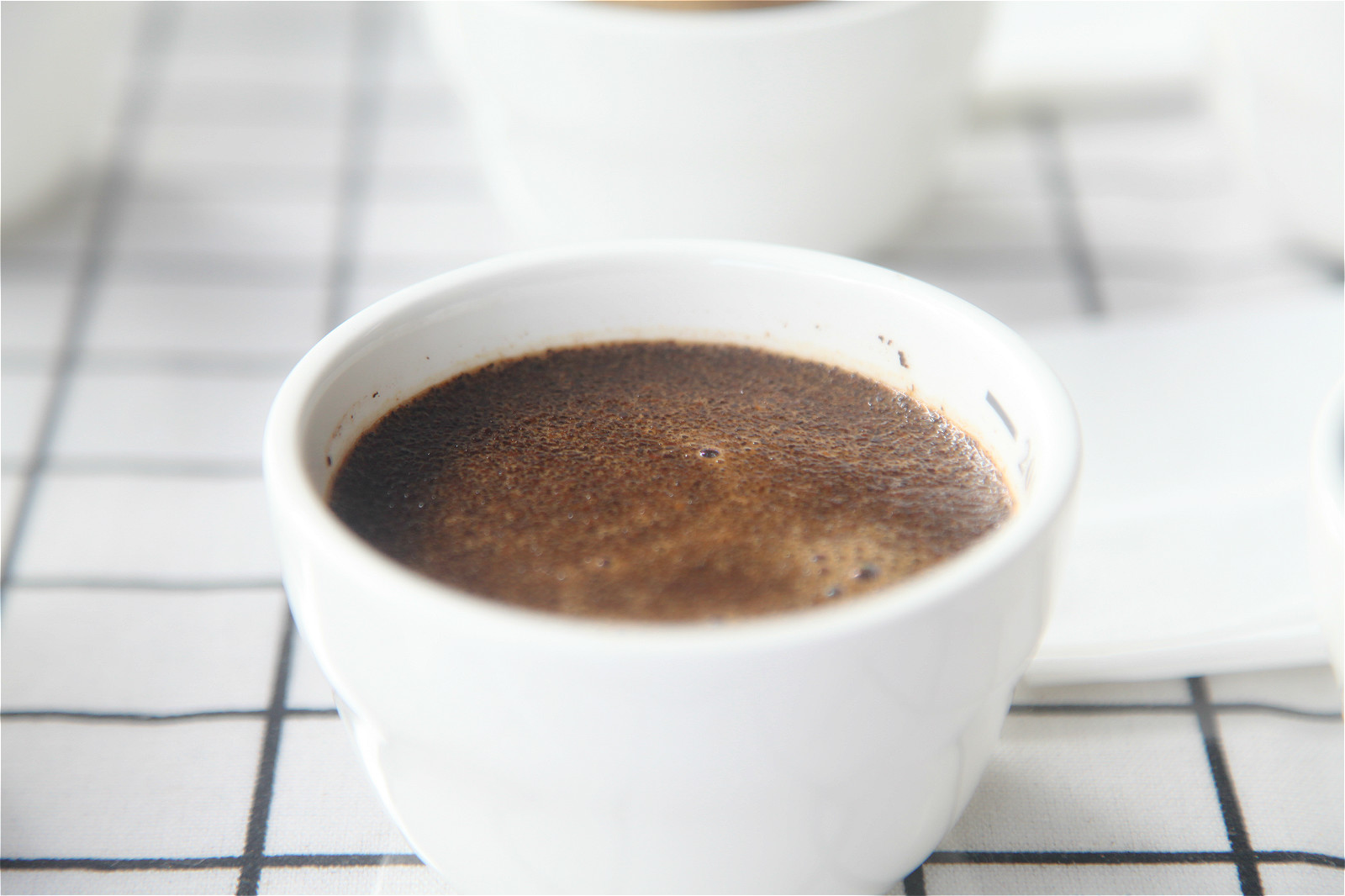
05 |brewing analysis
Recommended cooking methods: siphon, hand brewing
Abrasion: 3.5 (Japan Kofuji R440)
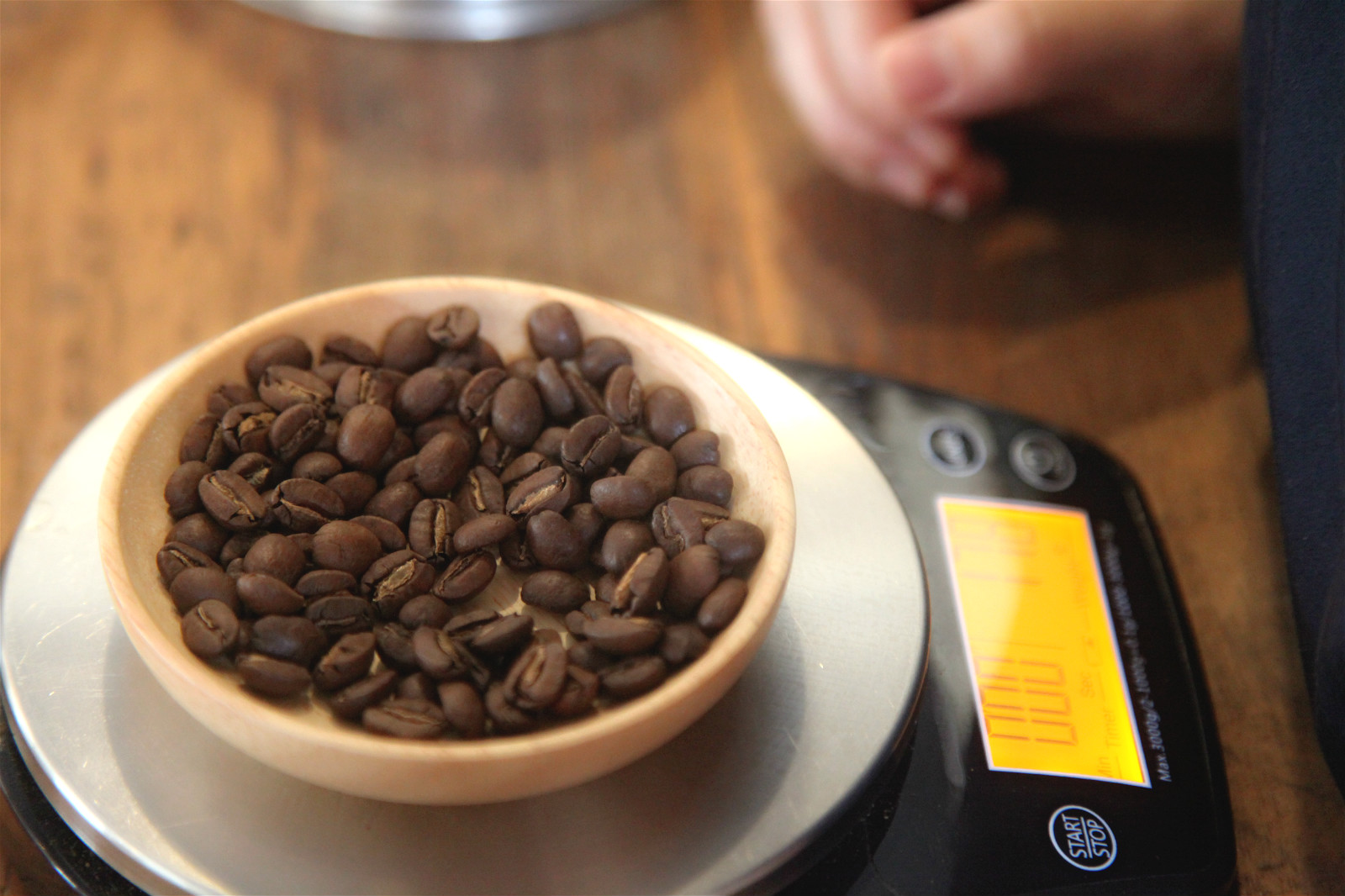
V60 filter cup, 15g powder, water temperature 90 degrees, grinding 3.5.The ratio of water to powder is close to 1:15
35 grams of water is steamed for 30s
Segment: water injection to 108ml cut off, slow water injection to 225ml
That is, 30-108-225

Other suggestions for trickle-filtration extraction:
Normal pressure, recommended abrasiveness of 3.5-4/water temperature 91°C
Aile pressure, recommended 2.5 grind, water temperature 89°C
Hand washing: 3.5 grinding degree, water temperature 89°C
3.5 Grinding-90 degrees water temperature
grinder dosers
aggressiveness number
powder quantity
filter bowl
Kofuji
3.5
15g
V60
water temperature
steam
Second stage water volume
Third stage water
Total time 2:04
90 degrees
35g water 30s
73g
117g
Total water: 225g
Sweetness: † † †
Acidity: ☆☆
Bitterness: ☆
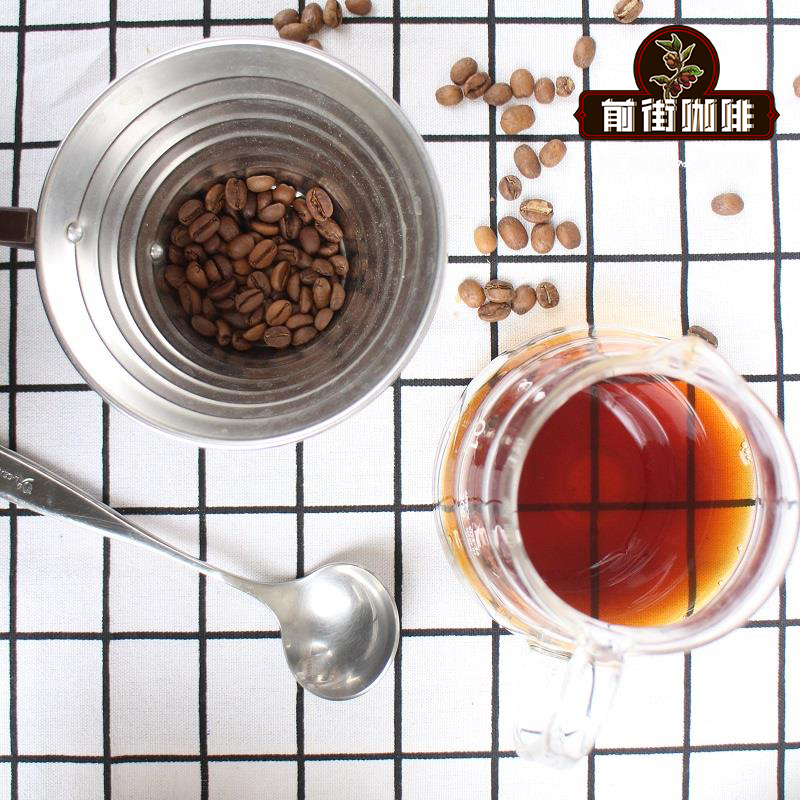
Share the learning results to everyone and to the industry
Yejia Xuefei Snow Lie Tu Ninety + Candles Yunnan Tiepi Card Kenya
Autumn hand punch Sunrise yega aricha Yegashefi red cherry Yegashefi Kocher
commercial bean Queen of Brazil Estate Yellow Bourbon Panama butterfly Ethiopian coffee beans
Blue Mountain, Yunnan, Bird of Paradise Flavor Comparison Sumatra Mantenin Sun-washed and water-washed beauty
Hawaiian KONA aged mantinin Hua kui Panama City, Panama
Donald of Colombia Costa Rica Canet Nicaragua Beautiful Manor
Guatemala Latisha Costa Rican black honey Brazil COE 3rd place
Panama BOP First Place Papua New Guinea Bird of Paradise Yega sherry orchard
Honduras West Java honey processing Burundi, Heart of Africa, Summer Village
Important Notice :
前街咖啡 FrontStreet Coffee has moved to new addredd:
FrontStreet Coffee Address: 315,Donghua East Road,GuangZhou
Tel:020 38364473
- Prev
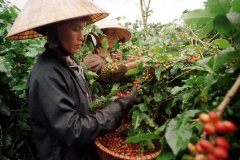
Vietnam coffee beans cultivation status quo-ethnic minorities try to reverse Vietnam coffee reputation
Professional coffee knowledge exchange More coffee bean information Please pay attention to coffee workshop (Weixin Official Accounts cafe_style) Vietnamese farmers pick coffee beans Vietnamese ethnic minorities are trying to grow quality machine coffee beans to polish the brand of Vietnamese coffee. Vietnam, they say, has a reputation as the world's second-largest coffee producer and sells more than instant coffee. Roland. Rol
- Next
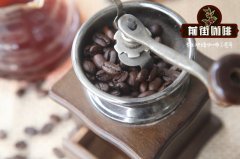
Varieties and cultivation of Vivette Nan Fruit in Miralvalle Miracle Villa, Guatemala
Guatemala Miralvalle Miracle Villa Vivette South Fruit Variety and planting since we came back from Colombia, it has been very busy. In addition to catching up with our usual baking tasks, we are also testing roasting new coffee to fill the gaps in retail and online stores. Launching new coffee is always exciting, but it also brings pressure because we try
Related
- Detailed explanation of Jadeite planting Land in Panamanian Jadeite Manor introduction to the grading system of Jadeite competitive bidding, Red bid, Green bid and Rose Summer
- Story of Coffee planting in Brenka region of Costa Rica Stonehenge Manor anaerobic heavy honey treatment of flavor mouth
- What's on the barrel of Blue Mountain Coffee beans?
- Can American coffee also pull flowers? How to use hot American style to pull out a good-looking pattern?
- Can you make a cold extract with coffee beans? What is the right proportion for cold-extracted coffee formula?
- Indonesian PWN Gold Mandrine Coffee Origin Features Flavor How to Chong? Mandolin coffee is American.
- A brief introduction to the flavor characteristics of Brazilian yellow bourbon coffee beans
- What is the effect of different water quality on the flavor of cold-extracted coffee? What kind of water is best for brewing coffee?
- Why do you think of Rose Summer whenever you mention Panamanian coffee?
- Introduction to the characteristics of authentic blue mountain coffee bean producing areas? What is the CIB Coffee Authority in Jamaica?

